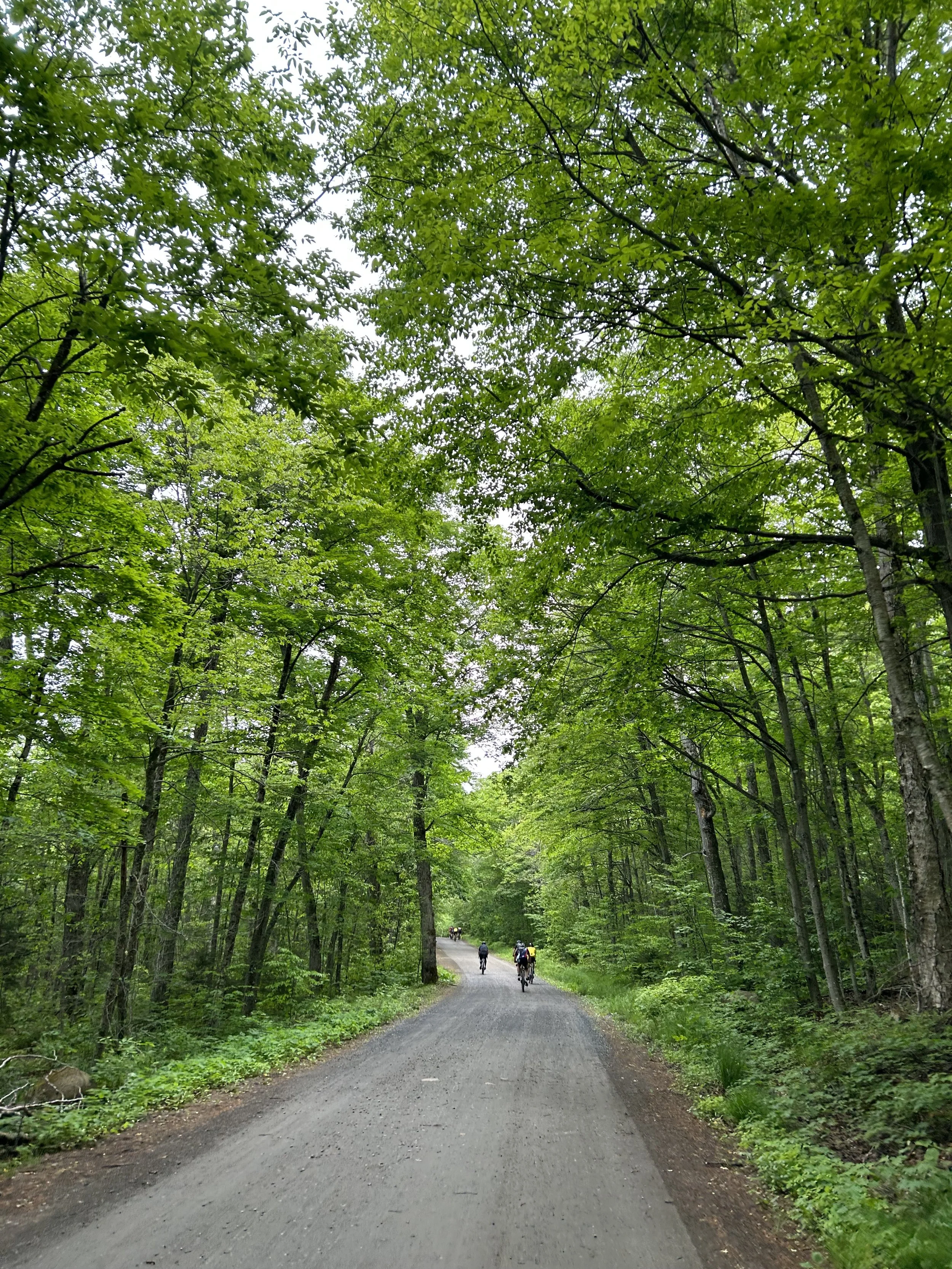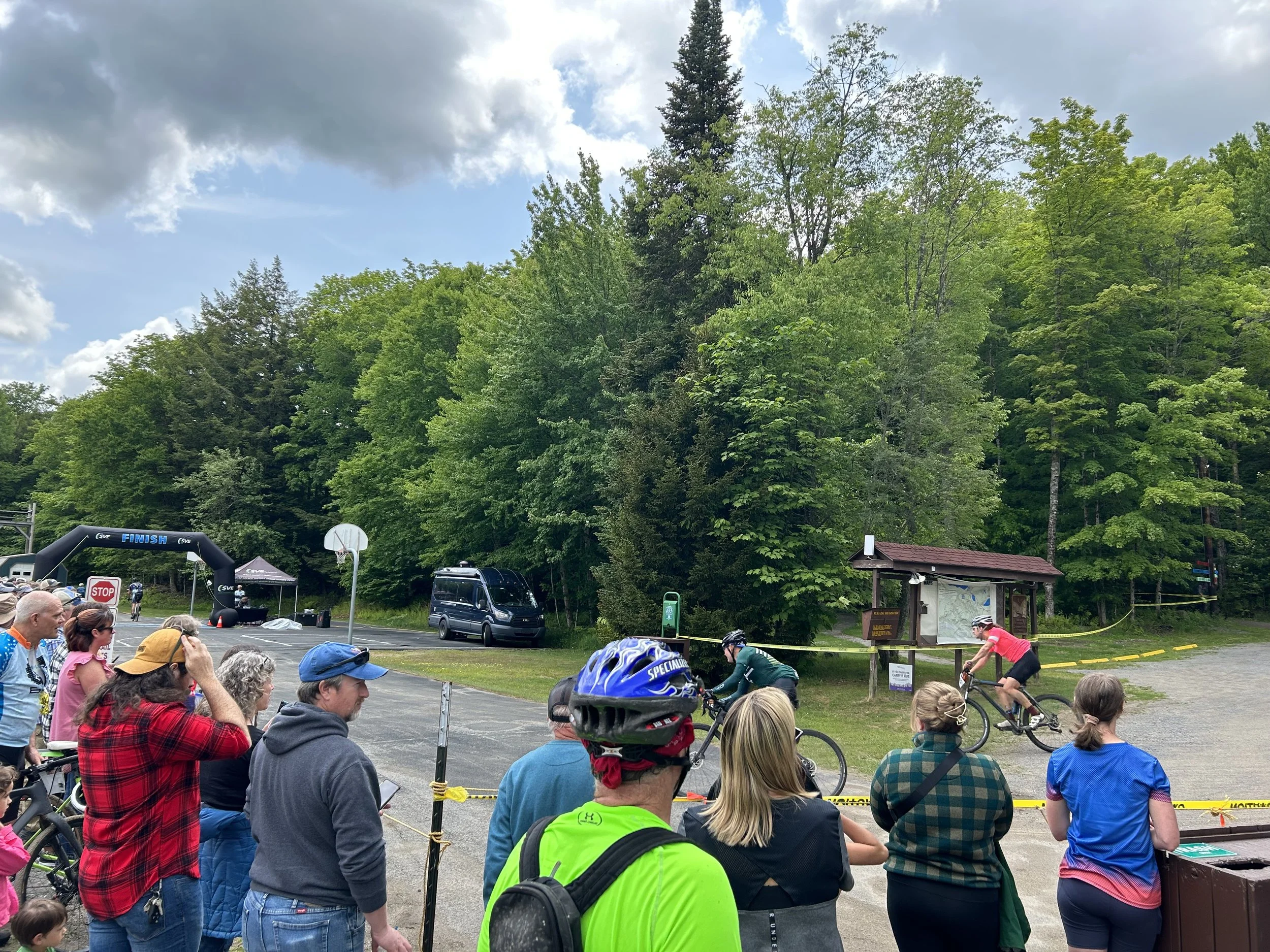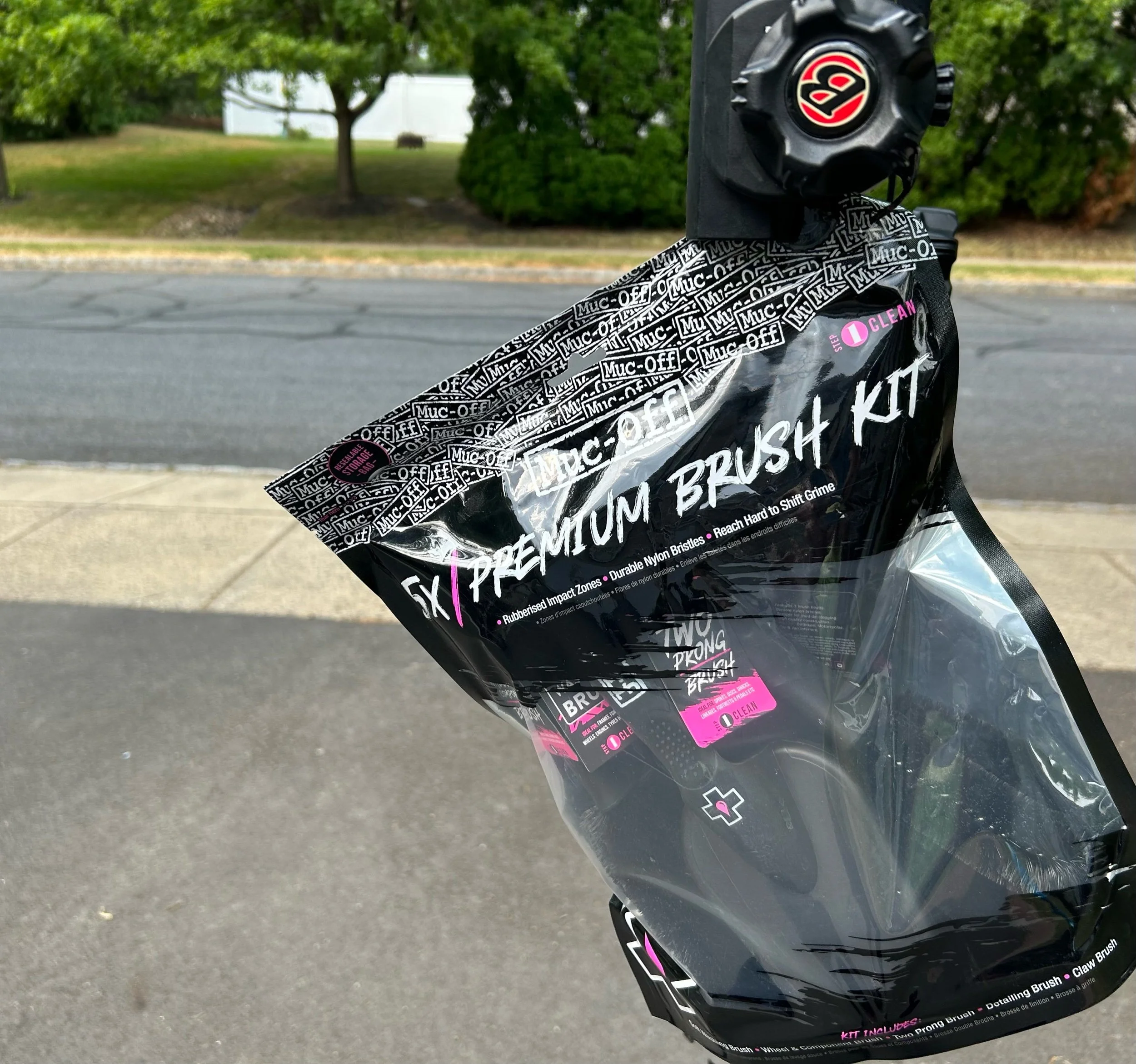Events: Black Fly Challenge 2023
(2023) The moment I crossed the finish line in Indian Lake, NY, in 2022, I knew I would have to return for the 26th annual Black Fly Challenge. Laying claim as America’s original gravel grinder, this Adirondack bike race is a town-to-town affair of roughly forty miles. Twenty-five miles are gravel in the form of a remote camping road with a fifteen mile per hour speed limit for cars. Each year the race reverses direction, which is why I came back- to see the Black Fly from a new perspective. But I should always be careful what I wish for.
All the plans meticulously laid out prior to race morning were thrown out. The initial plan was to come up into Inlet, NY, and ride a couple of miles to shake out the drive. With relentless rain on the way through New York state, that was abandoned, and I headed instead to the hotel in another part of the Adirondacks where I managed to get some dry miles. Race morning’s plan was to park in Blue Mountain Lake and ride to the start to shorten the return trip given that I would have to ride back to the car. Because registration did not happen the day before for me, this, too, was nixed and I found myself parking on the roadside in a panic. Registration was closing in five minutes. Having secured my number plate to the bike and having filled the water bottles in the restroom sink, I lined up on route 28 with the category one cyclocross and mountain bike division, ready to plunge into the headwind and wilderness.
The Black Fly Challenge is alluringly unique. It features two categories: category one for those who have raced before, and category two populated by those out for a sporting ride. There are tandem and junior categories, as well. This year Black Fly Challenge added an e-mountain bike category, participants who humbled me on every gravel climb. In the even years, the town of Inlet hosts the start party; Indian Lake hosts the finish. For the odd years, the roles are swapped. Therefore, the allure is to come back and have a new experience despite riding the same route.
The start in Indian Lake was unlike last year’s. For the first ten miles, the Black Fly Challenge covers the distance on paved roads with minimal climbing. Immediately two riders broke away, possibly to avoid what I would learn was the dicey group. They would be the eventual first and second place finishers. This fast start led to riders fanning out across the road. Drama was inevitable, and it was found almost immediately. Only a handful of miles in and a spectator with a camera set up camp well into the road. He did not budge as the pack approached and sure enough, the sound of riders crashing could be heard toward the back. The pack raged onward. Then there were vocal riders giving updates to their pace. Too many times riders shouted “Slowing!” rattling the peaceful scenery. Brake checks were rampant. At one point I was forced onto the sandy shoulder. For such a chill event, people certainly were fired up on the opening paved segment.
The moment the lead group left me behind early on the gravel segment. It was at this time it had also started to rain.
Having let go of society, that is, houses, barns, fences, and basic structures, the Black Fly Challenge slammed into the unpaved wilderness. The downhill into the gravel threshold had an added obstacle of a pickup truck parked on the side of the course. What followed was the immediate folding accordion of high speed riders colliding into the first uphill. Riders dismounted due to mechanicals. Some tried to run up the shoulder ‘cross style. Conversely, the start at Inlet has an immediate sorting climb to string participants out. Here we hoped not to get rear ended while focusing on the short gravel climb.
On paper the route for the 2023 Black Fly Challenge appears faster. The major climb takes place in the front half, leaving gentler rollers to follow. I had forgotten to note when the climb was considered over, a major error in the day’s planning. But speed would follow. No sooner was the climb dealt with than a light rain threaded through the foliage to firm up the sandy road. Last year’s dusty climbs were now perfectly damp to propel riders upwards. Very rarely climbs were conquered out of the saddle. The right tire paid off today. With the overcast conditions, obstacles materialized easier to spot. With faster climbing came rocket descents.
Having started the race surrounded by many, once again I found myself riding solo through the wilderness. The lead group continued pulling away with each pedal stroke. Stragglers would catch me and also ride away. Mostly I welcomed the dripping cap brim and the sweet aroma of the pine trees amidst a late spring rain storm. Every once in a while I would pass an occupied campsite. The hardwood leaves betrayed an early season light green hue. Every five miles I would pass the wonderful volunteers handing out water bottles for participants. Other than that, I rode mostly alone, hoping the speed would come around to latch onto the back of the lead group. I was also secretly racing one other particpant- an Indiana University student racing on a legit Little 500 Schwinn single speed. I forgot about him after riding around him on the initial gravel climb.
One of my favorite parts of the course is passing along the Wakely Primitive Area, particularly Wakely Pond. It is a small body of water that laps right up to the road. For a moment it’s easy to forget we are all racing and take in the brief view of the pond with the mountains backsplashing a grand view. (Curiously, Gould Road intersects near this pond, possibly suggesting another unpaved route that goes for miles.) As luck would have it, I passed by the pond with no one around, affording an extra peaceful moment only the Black Fly Challenge can offer.
This is the enjoyable sand section, indicating that the gravel is nearly complete. This was a fast section since the rain had compacted the sand.
The Black Fly Challenge calls itself the original gravel grinder. Whether it is the first is neither here nor there, but they are the undisputed owners of varied types of scrabbled tarmac. There was sand. There was sand with stones. There were pebbles with protruding rocks. There were lengthy segments of driveway stone. (This was enjoyable as it signaled the beginning of the end of the gravel road.) Just when gravel rhythm was gained, the surface changed completely and learning restarted. The flat sandy segment in the middle of the wilderness is the best time to finally peel the fingers off the bars and get a drink. The risk of hitting an obstacle is lowest there.
What remains of the Black Fly route before returning to the paved road are wild descents. When I thought I was barreling down the steep hills, riders would pass by without so much as a concerned look on their face. These descents were highlighted in the pre-race speech, but the riders who blew by must have been locals. One turn had the concerning sign of tire tracks pointing into the woods. Shortly after a turn a medical truck was in the road, a rider being attended to. A climb followed and much to my horror, the Indiana University student strode by without so much as a level of discomfort on his face. This would be a bad detail to relay to the ride buddies back home.
I geared up for the finish once the paved road returned. Initially I was under the impression the route climbed pavement then screamed down into the town of Inlet for a crit-like finish. I was caught off guard when a New York State Trooper guided us off the road after the descent, past a Medivac chopper that was lifting off, and onto what can only be described as a sandy driveway. Then the route turned into the woods to become single track riding where I caught a mountain biker. If someone asked whether I breathed or blinked in those final meters, I would not be able to accurately ascertain. The trail was technical enough after an exhausting race of focusing ten feet in front of the bike. The finish line announcer echoed through the forest. The band could be heard jamming through the trees. The goal was to remain upright; the finish was too close for an accident. A heavy descent into a hard paved turn led to the finish and the thud-thud of crossing the timing mats. I had finished the second Black Fly Challenge in as many years. This year I would not skip out on the post-race food.
The tight and technical finish curve after approximately a kilometer of single track riding through the woods to close out the 2023 Black Fly Challenge from Indian Lake to Inlet, NY.
With the long drive home, I had time to reflect on areas where the event can improve. The use of single-use plastic water bottles on the course is difficult for volunteers to distribute and participants to consume before having to pitch them into a single waste can. For a couple dollars more in the entry fee, perhaps organizers can supply aid stations with generic bike bottles that can be used longer and reduce waste. Given that I consumed less than one water bottle on account of trying to avoid losing grip with the handlebars, it seems to be a small matter regarding wilderness water. One wild ride came while thinking it was safe to take a sip only to have the bike buck from right to left on the road with barely a finger maintaining control. Even if riders reached for a bottle, just how many of them would swig again with such a rugged surface?
Limited to 1,000 participants, it’s easy to see the allure of the Black Fly Challenge. I can’t think of any event nearby that coordinates riders onto a single gravel road for 25 miles without any intersections or route variations, but that is exactly what this event conquers. As soon as I crossed the finish line last year, I knew I would return in 2023. For those who live a bit farther away, it’s a logistical challenge with housing, parking, and shuttling. This is one of those events perfect for teams to do or for a family weekend. As I did last year, I climbed atop the bike at the finish line and hopped onto route 28 to ride back to the car, thirty-five miles away by highway in Indian Lake. This year, though, there was a helpful wispy tailwind and the feeling that the climbs weren’t so bad in this direction. Maybe the day was faster after all.







